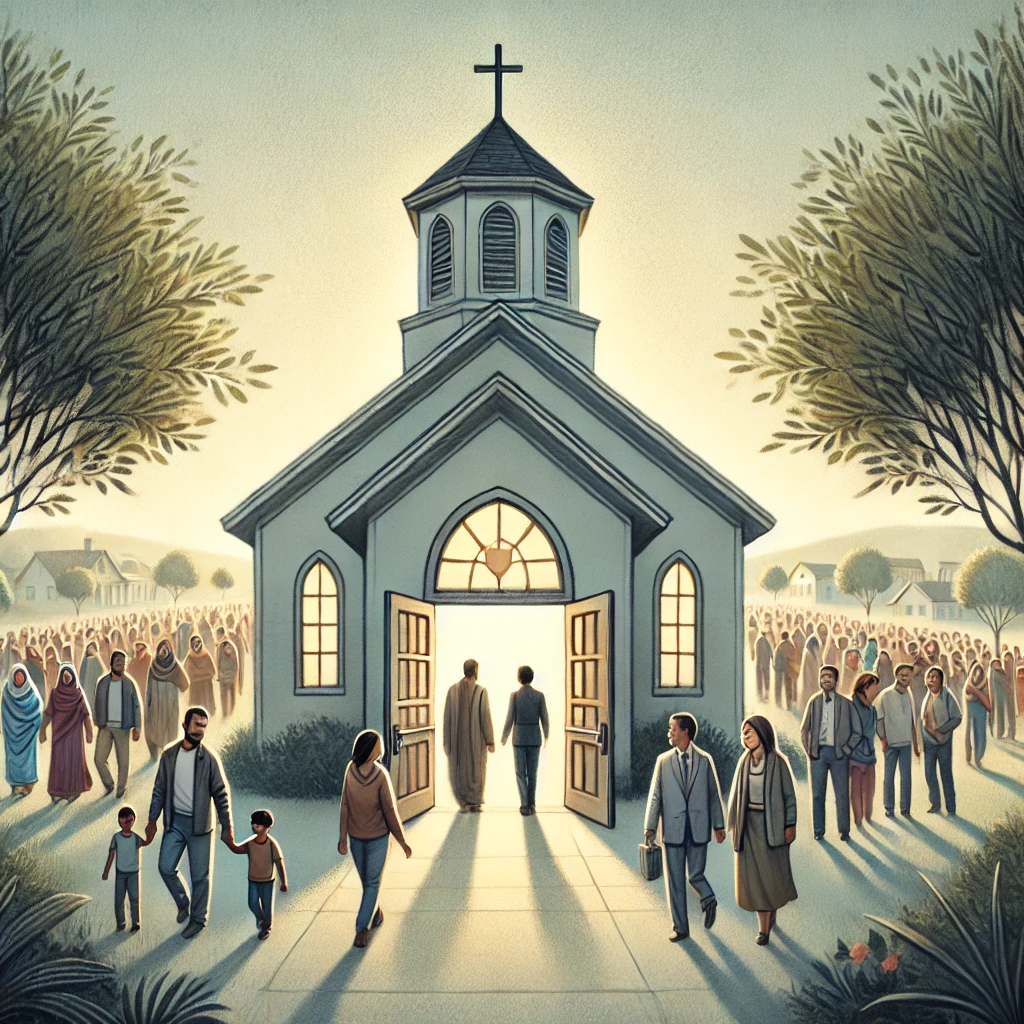
The Historic Role of Churches as Sanctuaries
Imagine finding yourself in a foreign land, without legal protection, fearful of being separated from your family. Many immigrants live with this daily reality. Churches have entered the gap, offering sanctuary to those in need, especially when societal structures fail them.
For centuries, churches have stood as symbols of refuge and hope. From the Underground Railroad in the 1800s to the sanctuary movement of the 1980s, their doors have been open to the oppressed. One powerful example is Elvira Arellano, who, in 2007, defied deportation and found sanctuary in a Chicago church. Her story represents courage, faith, and the enduring role of churches as safe havens.
But why do churches take on this role? It’s deeply rooted in their Christian values. The Bible calls believers to protect the vulnerable, embrace strangers, and advocate for justice. Transitioning into modern times, these values remain relevant, though the challenges have evolved.
Modern Challenges: Are Churches Still Safe?
Today, churches face new hurdles. Immigration policies have shifted, and the government’s stance on sensitive locations, like houses of worship, has changed. For instance, during the Trump administration, federal agents were no longer restricted from making arrests in churches. This has made it harder for immigrants to find sanctuary.
Consider the story of Jeanette Vizguerra, who lived in a Denver church for two years to avoid deportation. Her journey wasn’t just about physical safety—it was about finding a community that stood with her. Her story also highlights how churches often serve as advocates, not just shelters.
However, not everyone supports the idea of churches providing sanctuary. Critics argue that it’s a legal gray area, while others claim it places undue burdens on congregations. Despite these challenges, many churches remain steadfast, seeing it as their moral duty to help.
What Can Churches Do Today?
If you’re part of a church, you may wonder how your community can support those in need. The good news is, you don’t have to provide physical sanctuary to make a difference. Here are some ways your church can help:
- Advocacy and Education: Host workshops on immigration issues and teach members how to advocate for humane policies.
- Legal Aid Connections: Partner with organizations that offer legal assistance to immigrants and refugees.
- Community Support: Create programs that help newcomers integrate, like English classes or job assistance.
- Prayer and Fellowship: Offer spiritual and emotional support to those in crisis.
Remember, small steps can make a big difference. As churches act, they bring hope to those who feel forgotten.
A Legacy of Compassion and Faith
The idea of sanctuary isn’t just about shelter. It’s about embodying the love and compassion that Jesus modeled. It’s about standing up for justice, even when it’s inconvenient or unpopular.
Historically, churches have been at the forefront of these efforts, and their legacy continues today. Like the early Christians who formalized the concept of sanctuary, modern churches are called to be a light in the darkness.
Imagine the impact of more churches joined the cause. Picture a network of faith communities working together to support immigrants, refugees, and other vulnerable groups. That’s the power of the sanctuary movement—it turns faith into action.
Interactive Section: What Would You Do?
Take a moment to reflect on your role in this ongoing story.
Poll:
Do you believe churches should continue providing sanctuary to immigrants?
- Yes, it aligns with Christian values.
- No, it’s too risky and legally complicated.
- I’m unsure but would like to learn more.
Quiz:
How much do you know about the sanctuary movement?
- When did the sanctuary movement in the U.S. gain momentum?
a. 1960s
b. 1980s
c. 2000s - What was the primary reason for churches offering sanctuary in the 1800s?
a. Political protests
b. Underground Railroad
c. Migrant workers’ rights - What is one biblical basis for sanctuary?
a. Cities of Refuge in the Hebrew Bible
b. The parable of the prodigal son
c. The Story of Joseph in Egypt
(Answers: 1-b, 2-b, 3-a)
Conclusion: Be the Change
Churches have always been more than buildings. They are places where faith meets action, where the vulnerable find protection, and where justice takes root. While the challenges today are great, the opportunities to make a difference are even greater.
As you leave this page, consider this: What role can you play in helping your church be a beacon of hope? Whether through advocacy, prayer, or direct action, you can be part of this legacy. Together, we can uphold the sacred tradition of sanctuary and make a tangible impact in our communities.
What are your thoughts on the role of churches as sanctuaries? Share your story or ideas in the comments below. And don’t forget to subscribe for more stories that inspire faith and action.
Please subscribe to our YouTube channel at https://www.youtube.com/@PossibilityPluspm for inspiring videos
